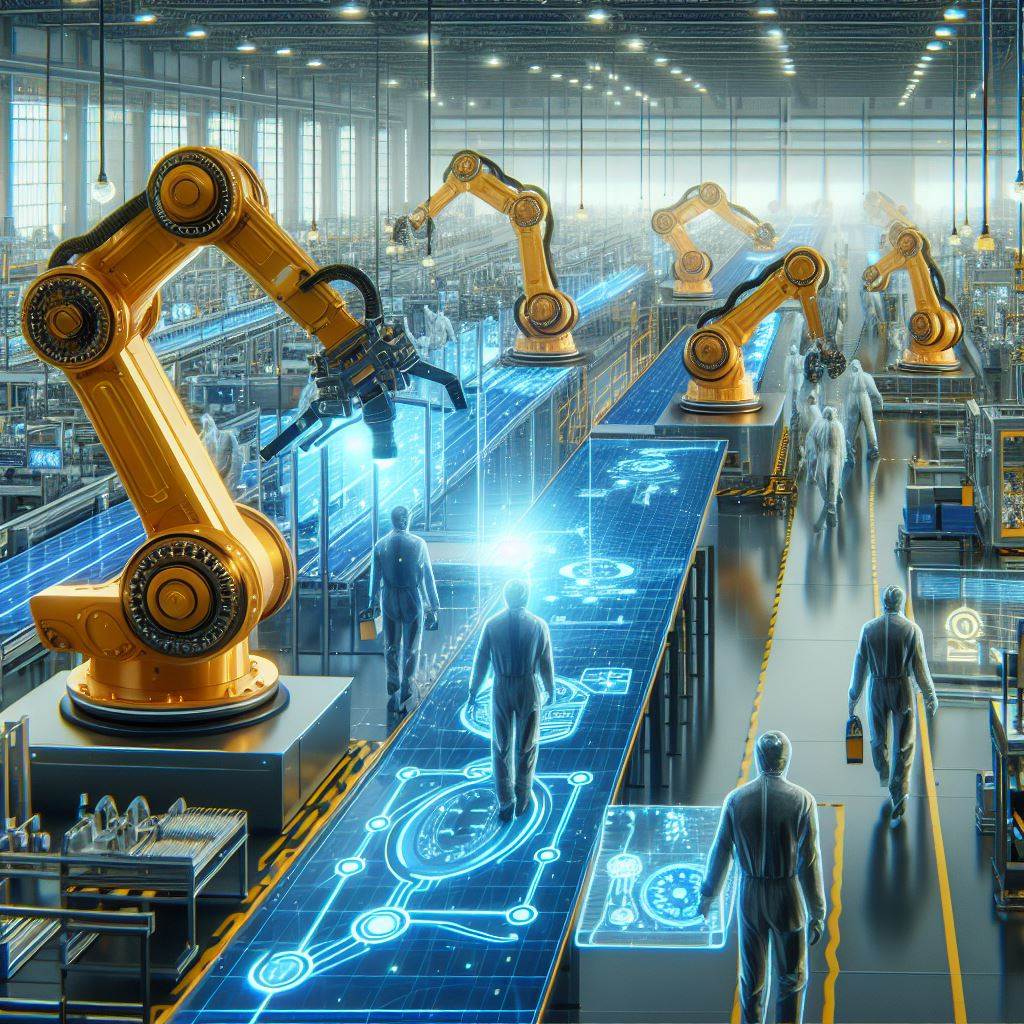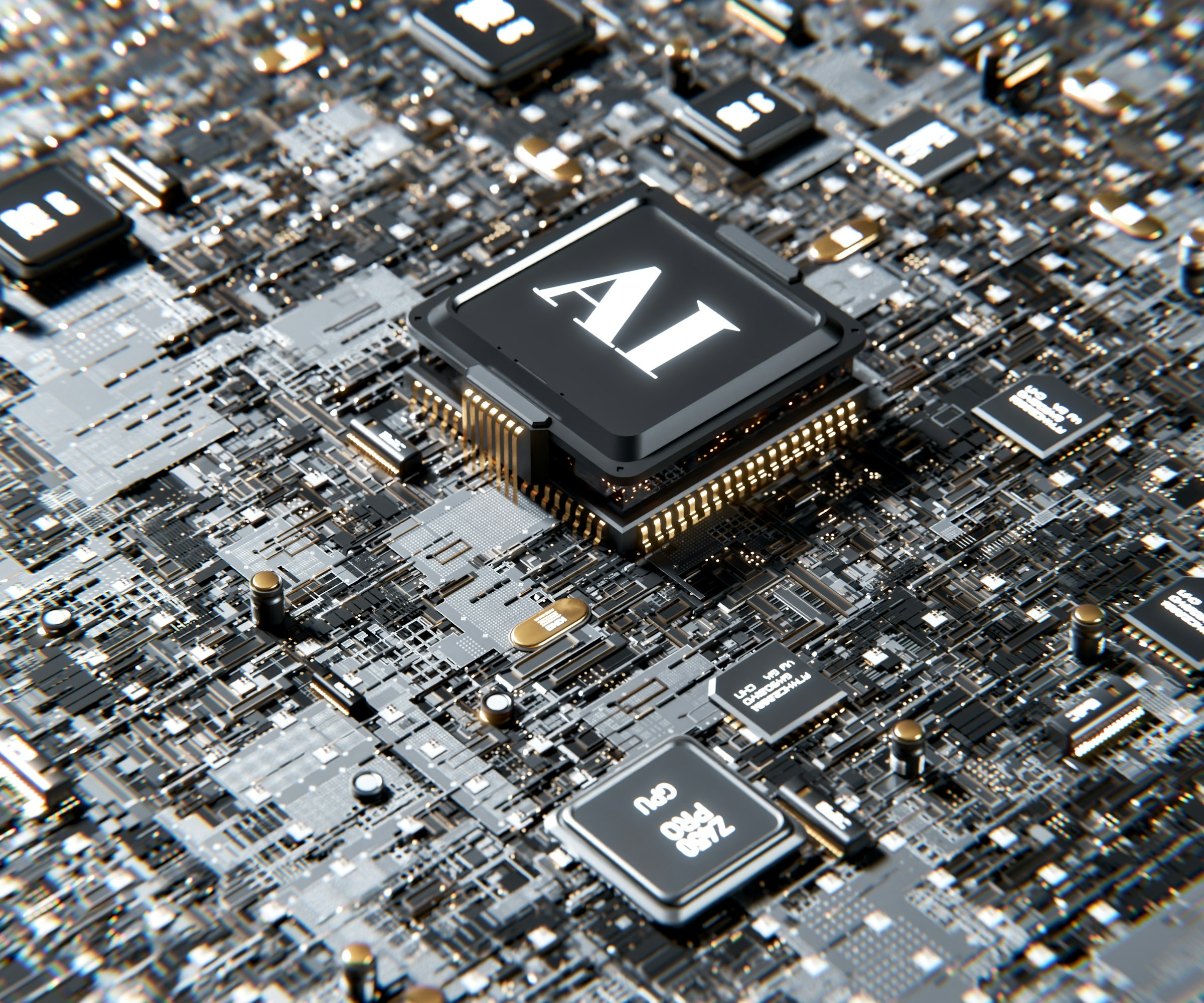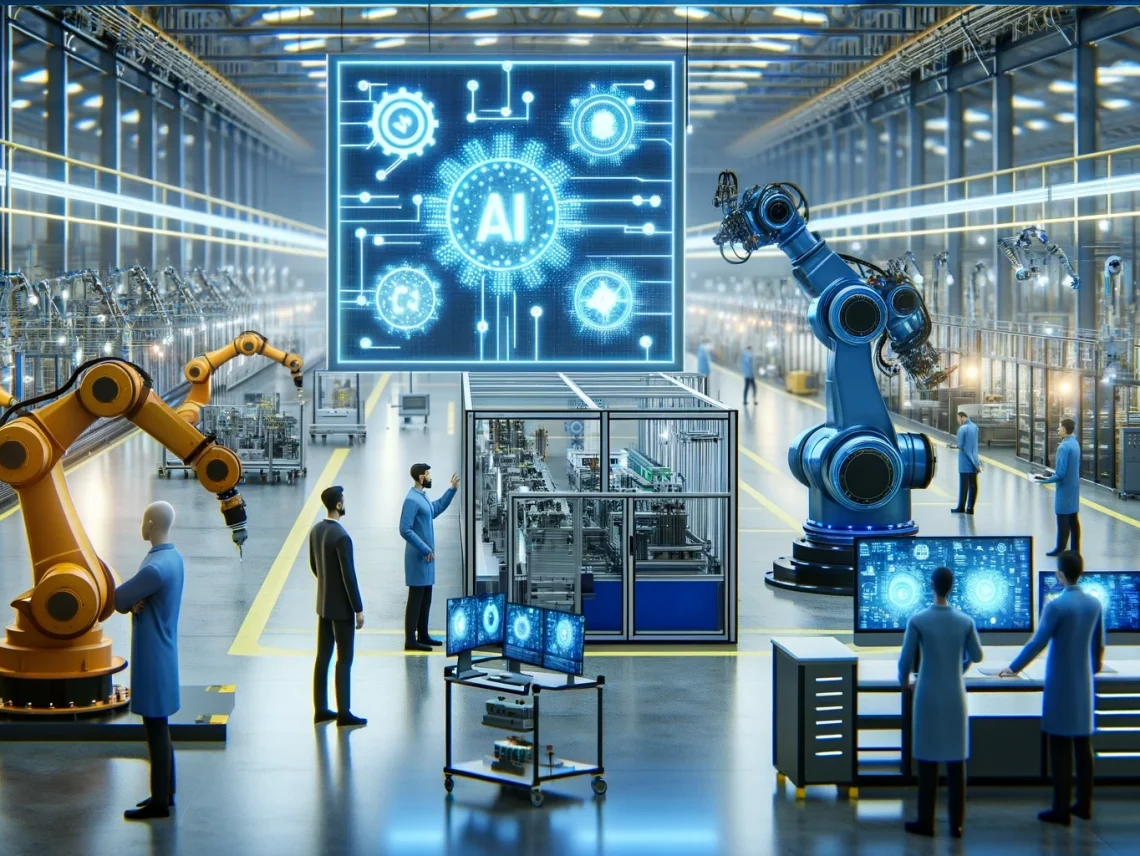
Artificial intelligence (AI) is rapidly transforming our world, with applications infiltrating every corner of industry. From medical diagnosis and fraud detection to personalized recommendations and self-driving cars, AI is poised to disrupt and redefine how we work and live. But simply deploying an AI system isn’t enough. To truly unlock its potential, you need the right team with the right skills. This begs the question: how do you assess your workforce to ensure a successful AI implementation?
We know that organizations face significant challenges in developing the necessary skills to leverage AI effectively. This includes both technical skills, such as data science, machine learning, and software engineering, and soft skills including critical thinking, problem-solving, and collaboration. A thorough assessment of an organization’s AI capabilities allows decision-makers to gain insights into AI readiness and identify areas needing development. This process often involves evaluating the workforce’s AI knowledge, the availability of data and resources, and the organization’s innovation culture.
Additionally, an AI skills assessment can uncover potential gaps or bottlenecks that might impede a successful AI implementation, such as a lack of specialized talent or inadequate infrastructure. Proactively addressing these challenges with targeted training, strategic hiring, and forming cross-functional AI teams can greatly enhance an organization’s readiness for AI, boosting the odds of a successful adoption and a strong return on investment.
Key Competencies Needed to Effectively Implement AI Solutions
Successful AI implementation requires a deep understanding of the organization’s strategic objectives and operational processes in addition to having the key competencies in place. This understanding ensures that AI initiatives align with the company’s overall goals and integrate smoothly into existing workflows, maximizing their impact and facilitating adoption. For successful AI implementation, fostering a shared vision and securing buy-in from all parties involved requires strong communication and collaboration across IT, business units, and stakeholders.
Building a strong foundation in these key competencies is essential:
• Technical Expertise: Data science, machine learning, software engineering, data engineering, cybersecurity
• Strategic Alignment: Business acumen, domain expertise, change management skills
• Cross-Functional Collaboration: Effective communication, teamwork, problem-solving
• Iterative Mindset: Continuous learning, adaptation, and improvement
Continuous monitoring, evaluation, and refinement of AI models are essential to maintain their accuracy, reliability, and relevance in dynamic business environments. An agile and iterative approach allows organizations to quickly adapt to changing market conditions and technological advancements. By fostering a combination of technical expertise, strategic alignment, cross-functional collaboration, and an iterative mindset, organizations can effectively harness the potential of AI solutions and gain a competitive edge in their industries. This approach inherently supports the ethical and responsible deployment of AI, guided by the governance frameworks established for the organization.
Conducting a Comprehensive Skills Assessment for AI Readiness
Building a strong foundation in AI skills is critical for successful implementation, yet organizations can fall short by solely relying on training programs. While these initiatives play a vital role in developing core competencies, true competitive advantage hinges on cultivating a workforce that can not only apply knowledge but also gain deep, practical experience. Conducting a comprehensive AI skills assessment helps bridge this gap by identifying existing skillsets and pinpointing areas needing development. This data-driven approach ensures training programs are targeted and effective, while also guiding the development of organizational learning initiatives that equip employees with the hands-on experience necessary to thrive in an AI-driven future.
To assess your organization’s AI readiness, consider the following key steps:
• Define AI Competency Frameworks: Identify the technical (e.g., programming languages, machine learning) and soft skills (e.g., adaptability, self-awareness, relationship management) needed for various roles. This establishes a baseline for evaluation.
• Skills Audits and Assessments: Utilize tools such as performance reviews, self-assessments, and in-take meetings to gauge the workforce’s current capabilities and identify skill gaps.
• Consider Specialized Partners: Partnering with AI skills assessment firms can streamline the process, offer tailored services, and provide unbiased insights.
• Develop Targeted Training: Based on the assessment results, create training programs (on-the-job, professional development) to address identified skill gaps. Focus on both technical expertise and soft skills for successful AI implementation.
• Continuous Learning: Regularly update skills assessments and training programs to reflect evolving technologies and business needs. This ensures your workforce stays current and drives ongoing success in AI initiatives.
By methodically assessing and developing the skills necessary for AI adoption, organizations can significantly enhance their capability to leverage the full potential of AI technologies. Partnering with specialized firms can further optimize this process, leading to more effective and efficient readiness for AI integration.
Upskilling the Workforce to Bridge the AI Skills Gap
To effectively bridge the AI skills gap, organizations must identify specific skill deficiencies within their workforce. This includes a comprehensive range of technical skills, such as advanced data analytics and AI system management, alongside crucial soft skills like ethical AI usage, empathy, and communication. By tailoring training programs to address identified needs, organizations equip employees with a comprehensive skillset that spans both core and advanced competencies. Programs should integrate emotional intelligence modules to enhance collaboration, leadership, and decision-making alongside the technical curriculum.
Incorporating specific AI certification courses that also emphasize soft skills can significantly boost employee confidence and credibility. These certifications validate acquired skills and demonstrate a commitment to comprehensive professional development. Continuous learning should be promoted throughout the organization, with regular updates to training programs and ongoing opportunities for emotional intelligence development. This approach not only keeps the workforce current with AI advancements but also fosters essential soft skills including empathy and adaptability, which are key for ethical decision-making in AI.
Reskilling employees to fill new AI-driven roles should focus on leveraging their extensive organizational knowledge while aligning their new skills with strategic goals. This focus ensures that technical training is complemented by strong emotional intelligence, enhancing job satisfaction and career development. Mentorship and knowledge-sharing programs can further accelerate this process.
Monitoring the effectiveness of these training programs is crucial. It should include assessments of how well technical skills and emotional intelligence are being integrated into the workplace. Feedback from these evaluations can help refine training efforts, ensuring they remain relevant and impactful.
By focusing on a combination of technical skills and emotional intelligence, organizations can better prepare their workforce for the challenges of AI integration. This approach not only maximizes the effectiveness of AI technologies but also cultivates a more collaborative, innovative, and adaptable organizational culture.
Aligning AI Skills for Strategic Impact
Developing a robust AI governance framework is the first step in ensuring responsible and effective AI integration. This framework defines the policies, procedures, and ethical guidelines that govern AI use, aligning it with the organization’s values and objectives. Establishing strong governance early sets the stage for success.
Next comes a comprehensive AI implementation strategy. This strategy outlines key AI goals, identifies primary use cases, and sets clear benchmarks for success. It serves as a roadmap, guiding the deployment of AI technologies in a way that is purposeful and aligned with broader business strategies.
With a governance framework and implementation strategy established, effective AI talent management becomes crucial. Organizations should focus on building a talent pipeline that supports their strategic AI goals. This includes attracting, developing, and retaining individuals with the necessary technical and soft skills through specialized recruitment, partnerships with educational institutions, and the creation of compelling career paths for professionals with AI and complementary skills.
An AI Center of Excellence (CoE) can be instrumental in aligning AI skills with objectives. The CoE standardizes AI practices, develops best practices, and provides leadership and support for AI projects. By centralizing expertise and resources, the AI CoE ensures consistent execution and deep integration of AI initiatives.
Finally, an AI skills roadmap, aligned with the implementation strategy and governance policies, is essential. This roadmap outlines timelines for training, upskilling, and potentially hiring new talent. It acts as a living document that evolves with the organization’s needs and includes metrics to measure the success of the skills development program. By continually evaluating the skills gap and adapting the roadmap, the workforce remains equipped to meet current and future challenges.
Ensuring AI Success through Strategic Skills Assessment and Development
The journey toward successful AI integration is multifaceted, requiring meticulous planning, strategic alignment, and continuous adaptation. By assessing the existing skills and capabilities within an organization, leaders can effectively prepare for the integration of AI technologies, ensuring that all employees are equipped to handle the new demands these systems introduce. This skills assessment, encompassing both technical and soft skills, is pivotal in identifying gaps that could potentially hinder the effective implementation and scaling of AI solutions. Addressing these gaps through targeted training and strategic hiring ensures a smooth transition to AI-enabled processes and fosters a culture of continuous learning and innovation.
Additionally, aligning AI skills with organizational objectives ensures that AI initiatives support strategic goals and enhance operational efficiencies. The establishment of a robust AI governance framework at the outset provides a strong ethical and procedural foundation, guiding all subsequent AI endeavors. An AI Center of Excellence can centralize expertise and leadership, ensuring that AI practices are standardized and effectively integrated across the organization. Additionally, an AI skills roadmap provides a structured plan for the development and integration of necessary skills over time, allowing for adjustments as technology and business needs evolve.
Ultimately, the effective implementation of AI is not just about the technology itself but also about the people behind it. By fostering an environment where technical proficiency is supported with strong emotional intelligence and ethical considerations, organizations can realize the potential of AI. This strategic approach not only enhances the immediate effectiveness of AI projects but also ensures long-term sustainability and success in an ever-evolving digital landscape.
In sum, the road to AI success is paved with thoughtful skills assessment, strategic alignment of skills with business objectives, and a commitment to ongoing development and governance. These elements combine to create a resilient, agile organization ready to capitalize on the opportunities AI presents. Ready to assess your organization’s AI readiness? Utilize our comprehensive AI readiness assessment tool to gain valuable insights into your organization’s current state and identify areas for development.

As industries accelerate their embrace of artificial intelligence (AI), many organizations find themselves grappling with unique challenges that hinder full-scale AI integration. These obstacles often stem from a complex relationship between technological readiness and human factors. Successful AI adoption requires managers to navigate these complexities by leveraging their emotional intelligence (EQ), understanding organizational culture, and managing internal politics. This blog post introduces a multi-frame approach to overcoming barriers to AI implementation, targeting managers who are at the forefront of these transformations.
The Current Landscape of AI Adoption
AI holds tremendous potential for enhancing business operations, decision-making processes, and overall organizational performance. However, the journey to successful AI integration is fraught with challenges. Managers often find that their effectiveness is deeply influenced by the organizational culture and internal politics within which they operate. According to Ernst & Young (EY), leaders equipped with EQ can significantly improve the chances of successful organizational change, particularly during transformations accelerated by AI (EY, 2021).
Importance of EQ and Organizational Dynamics
Managers can be both technically competent and emotionally intelligent but still encounter challenges that prevent them from realizing AI-related goals. Management development programs can improve EQ and help managers navigate challenging situations, but they cannot change the entrenched culture or politics within an organization. AI adoption requires a deliberate approach that involves understanding one’s strengths, weaknesses, and EQ levels, as well as the organization’s culture and political structure and history. Only with this understanding can managers effectively approach their development and AI governance, prevent bias, and foster a culture of psychological safety—all of which are crucial for successful AI adoption.
Defining Organizational Culture in the Context of Technology
Organizational culture comprises shared beliefs, values, customs, behaviors, and artifacts that shape how work is done. These shared values influence how individuals communicate and approach their work, determining the organization’s response to new challenges and opportunities. Cultures that value innovation and risk-taking tend to embrace AI projects with more enthusiasm, while those that prefer the status quo may resist (Schein, 2010).
Trust within the organization is also critical. High-trust environments enable experimentation and learning, essential for AI integration, as employees feel safe exploring new technologies without fear of reprisal. This sense of psychological safety allows employees to voice concerns, suggest improvements, and engage deeply with AI initiatives. Conversely, low-trust settings can stifle innovation and lead to reluctance in adopting AI (Edmondson, 2019).
How Cultural Values and Practices Influence AI Adoption
Cultural values and practices serve as the heart of every organizational culture, shaping attitudes towards new technologies including AI. Organizations that prioritize innovation create an environment where employees are encouraged to think creatively and experiment with new ideas. Adaptability is another critical value because it allows organizations to manage the rapid changes that come with AI implementation. Practices such as transparent communication and inclusive decision-making are vital for ensuring that AI initiatives are well-received across all levels of the organization. Recognition and reward systems that celebrate successes in AI projects can also reinforce positive behaviors and motivate employees to engage more deeply with AI initiatives (Kotter, 2012).
Organizational Politics and AI Implementation
Navigating power dynamics and political landscapes is another critical aspect of AI implementation. Organizational politics manifest through influence, relationships, and power dynamics among stakeholders, affecting project management aspects from lobbying for support to negotiating resources. Managers must skillfully navigate internal politics to secure support for AI initiatives, which may involve using their own political capital or enlisting others to advocate on their behalf. Effective management of these political and power dynamics is crucial for overcoming barriers and achieving successful AI integration (Pfeffer, 1992).
Leveraging Bolman and Deal’s Four Frames for Effective AI Integration
In their work “Reframing Organizations,” Bolman and Deal present a comprehensive framework for understanding organizational dynamics through four distinct lenses: Structural, Human Resources, Political, and Symbolic. Applying these frames to AI implementation offers valuable insights for managers:
1. Structural Frame: Focuses on the infrastructure and policies supporting AI implementation. Managers need to assess technological capabilities and identify necessary upgrades or changes (Bolman & Deal, 2017).
2. Human Resources Frame: Centers on the skills, attitudes, and well-being of employees interacting with new AI technologies. Empathy and social skills are crucial for understanding and addressing employee anxieties (Goleman, 1995).
3. Political Frame: Emphasizes the dynamics of power and politics within the organization. Managers must navigate stakeholder interests and manage resource allocation effectively (Pfeffer, 1992).
4. Symbolic Frame: Highlights the importance of culture, symbols, and communication in embedding AI into the organizational fabric. Inspirational leadership and effective use of stories and symbols can unite teams around the AI vision (Bolman & Deal, 2017).
Conclusion
The multi-frame approach offers a comprehensive strategy for managers to overcome obstacles to AI implementation. By understanding and addressing the cultural, political, and emotional intelligence dimensions of AI adoption, as well as having solid technical competencies, managers can significantly enhance their effectiveness in integrating AI technologies. This holistic approach not only ensures technological success but also promotes positive human impact, fostering a culture of innovation and continuous improvement.
If you’re ready to overcome the obstacles to AI implementation and lead your organization to success, we invite you to take the next step.
View the Strong AI Integration Framework: Gain a deeper understanding of how our multi-frame approach can help you navigate the complexities of AI adoption.
Contact Us for Coaching: Are you looking for personalized guidance to support your AI initiatives? Reach out to us today to learn more about our coaching programs designed to empower managers like you. Together, we can create a roadmap for successful AI integration that aligns with your organizational culture and strategic goals.
Email: tuesday@tuesdaystrong.com
Stay ahead of the curve and transform your organization with confidence. We look forward to partnering with you on this exciting journey!
References
• Bolman, L. G., & Deal, T. E. (2017). Reframing Organizations: Artistry, Choice, and Leadership. Jossey-Bass.
• Edmondson, A. C. (2019). The Fearless Organization: Creating Psychological Safety in the Workplace for Learning, Innovation, and Growth. Wiley.
• Ernst & Young. (2021). The Role of Emotional Intelligence in Business Transformations.
• Goleman, D. (1995). Emotional Intelligence: Why It Can Matter More Than IQ. Bantam Books.
• Kotter, J. P. (2012). Leading Change. Harvard Business Review Press.
• Pfeffer, J. (1992). Managing with Power: Politics and Influence in Organizations. Harvard Business School Press.
• Schein, E. H. (2010). Organizational Culture and Leadership. Jossey-Bass.
People, Process, and Data: Roadblocks and Solutions for AI Implementation in Manufacturing

Imagine a factory floor where robots seamlessly collaborate with human workers, machines predict and prevent breakdowns before they occur, and production lines autonomously optimize for maximum efficiency. This is the future that artificial intelligence (AI) promises to bring to the manufacturing industry [1, 4]. However, the path to this future is not without obstacles. Integrating AI into complex manufacturing environments requires navigating a series of challenges.
Hurdles to AI Adoption
One of the significant hurdles to AI adoption is a company’s digital maturity [1]. Organizations with limited digital infrastructure and a less skilled workforce face a steeper climb in implementing AI effectively. Investment in infrastructure upgrades and employee training are crucial for success [1].
Data quality and availability are another critical hurdle. AI systems rely on large volumes of clean, high-quality data to function effectively. Manufacturing environments often struggle with inconsistent data collection practices, making it difficult to ensure data quality meets the demands of AI applications [3].
Cultural resistance to change is another significant barrier. The introduction of AI can be met with skepticism and fear, particularly regarding job displacement [3]. Effective change management, clear communication, and employee education are essential to demonstrate how AI can augment human capabilities and create a more efficient and productive work environment [3].
Additionally, the complexity of AI systems and the need for specialized talent present further obstacles. Implementing AI often requires a workforce with skills in data science, engineering, and AI development, which can be scarce [5]. This talent gap can slow down AI adoption and increase reliance on external vendors, adding to the overall cost [5].
The customization required for AI applications in manufacturing is another significant challenge. Each manufacturing environment has unique needs and processes. Off-the-shelf AI solutions may not be effective, and customizing AI requires significant resources and expertise [4].
Finally, ensuring trust in AI systems is crucial for their successful implementation. Manufacturers need to understand how AI makes decisions to trust its recommendations and actions. Developing AI systems with transparency is essential for their acceptance and effective use in manufacturing environments [1].
Unleashing the Power of AI
Despite these challenges, the potential benefits of AI in manufacturing are undeniable. AI can automate repetitive tasks, improve quality control processes, optimize production scheduling, and drive predictive maintenance strategies [1, 3, 4]. This translates to significant gains in efficiency, reduced downtime, and improved overall equipment effectiveness (OEE).
Advanced AI applications can also analyze vast amounts of data to identify patterns and trends that humans might miss. This can lead to innovative product development, improved process optimization, and the creation of entirely new manufacturing paradigms [4].
As the industry continues to evolve, overcoming the challenges highlighted above will be key to unlocking the full potential of AI in manufacturing. By focusing on digital transformation, data quality initiatives, and a people-centric approach to change management, manufacturers can harness the power of AI to gain a significant competitive advantage.
Reference List
Claude.ai. (2024). https://claude.ai/chat/be9527c2-42bb-464f-a9a0-19fbcad54cb9
MIT Sloan Management Review. (2022, September 27). AI in manufacturing: Start with data, not complex AI systems. https://news.mit.edu/2023/ai-based-estimator-manufacturing-medicine-0503
PwC. (n.d.). Introduction to implementing AI in manufacturing. https://www.pwc.com/gx/en/industries/industrial-manufacturing/publications/introduction-implementing-ai-manufacturing.html
Valiot. (2023, September 12). Overcoming production challenges: Implementing artificial intelligence in manufacturing environments. https://valiot.io/blog/post/optimizing-production-line-efficiency-a-deep-dive-into-valiot-s-ai-driven-solutions?show=8
World Economic Forum. (2024, January 29). How we can unleash the power of AI in manufacturing. https://www.weforum.org/press/2022/12/ai-can-enable-a-new-era-in-manufacturing-sector-says-world-economic-forum-white-paper/
World Economic Forum. (2023, January 23). AI in the manufacturing sector: Barriers to adoption. https://www.weforum.org/agenda/2023/01/ai-manufacturing-sector-barriers-to-adoption/

In today’s fast-paced digital age, collaboration has become more important than ever. As businesses strive to stay competitive and innovative, the ability to work together effectively is crucial. However, collaboration can pose significant challenges, particularly when teams are spread across different locations or time zones. Fortunately, technology has revolutionized the way we collaborate, offering a wide range of tools and solutions to enhance efficiency and productivity.
The Importance of Collaboration in the Digital Age
Collaboration is the cornerstone of success in today’s interconnected world. In a globalized marketplace, businesses need to bring together individuals with diverse skills and expertise to tackle complex problems and drive innovation. By pooling their knowledge, experiences, and perspectives, teams can generate fresh ideas, make better decisions, and deliver superior results. Collaboration fosters a sense of collective ownership, encourages open communication, and promotes a culture of teamwork. Moreover, it enables organizations to tap into the full potential of their employees, creating a sense of belonging and motivation.
Common Challenges in Collaboration
While collaboration brings numerous benefits, it also presents its fair share of challenges. One of the most significant hurdles is the physical separation of team members. With remote work becoming increasingly common, teams may be dispersed across different locations or even different time zones. This geographical distance can hinder communication, create delays, and make it difficult for team members to build rapport and trust. Additionally, language and cultural barriers can further complicate collaboration efforts, leading to miscommunication and misunderstandings. Finally, conflicting priorities, egos, and personal agendas can undermine the spirit of collaboration, creating friction and hindering progress.
How Technology Can Enhance Collaboration
Technology has revolutionized the way we collaborate, offering a wide range of tools and solutions to overcome the challenges faced by teams. Communication platforms such as Slack, Microsoft Teams, and Zoom have become indispensable in facilitating real-time communication and fostering collaboration, regardless of geographical barriers. These platforms allow teams to share ideas, exchange information, and collaborate on projects in a seamless and efficient manner. Moreover, cloud-based document sharing and project management tools like Google Drive and Trello enable teams to work on the same documents simultaneously, track progress, and stay organized. Virtual whiteboards, video conferencing, and screen-sharing capabilities further enhance collaborative experiences, enabling teams to brainstorm, present ideas, and provide feedback in real-time.
Collaboration Tools for Remote Teams
For remote teams, collaboration tools are particularly crucial in bridging the geographical gap and fostering effective communication. Project management software such as Asana, Basecamp, and Jira enable teams to plan, organize, and track projects, ensuring that everyone is on the same page. File sharing and collaboration platforms like Dropbox and Google Drive allow team members to access and edit documents in real-time, eliminating version control issues. Virtual meeting tools like Zoom and Microsoft Teams enable face-to-face interactions, making it easier to build relationships and maintain a sense of camaraderie. Additionally, instant messaging apps like Slack, Microsoft Teams, and WhatsApp facilitate quick and efficient communication, reducing the need for lengthy email exchanges.
Best Practices for Effective Collaboration
While technology provides the means for collaboration, it is essential to establish best practices to ensure its effectiveness. First and foremost, clear communication is key. Teams should establish open lines of communication, ensuring that all members are on the same page and have a clear understanding of objectives, roles, and responsibilities. Regular check-ins and progress updates help keep everyone informed and accountable. Second, fostering a culture of trust and respect is crucial. Team members should feel comfortable speaking up, sharing ideas, and providing constructive feedback. Encouraging diversity of thought and creating an inclusive environment promotes innovation and creativity. Finally, establishing clear goals and defining metrics for success helps keep collaboration efforts focused and aligned with organizational objectives. Regular evaluation and feedback loops allow for continuous improvement and course correction if necessary.
Overcoming Barriers to Collaboration
While technology can greatly enhance collaboration, it is important to address and overcome the barriers that may impede effective teamwork. One crucial barrier is resistance to change. Some team members may be hesitant to adopt new technologies or unfamiliar with how to use them effectively. Providing comprehensive training and support can help alleviate these concerns and ensure that everyone is comfortable and proficient in utilizing collaboration tools. Another barrier is a lack of clear processes and guidelines. Establishing clear protocols for communication, decision-making, and conflict resolution can help minimize confusion and promote consistency. Finally, fostering a culture of collaboration requires strong leadership and role modeling. Leaders should actively promote and encourage collaboration, both through their actions and by creating incentives and recognition programs that reward teamwork and cross-departmental collaboration.
The Future of Collaboration in the Digital Age
As technology continues to evolve at a rapid pace, the future of collaboration looks promising. Artificial intelligence and machine learning algorithms have the potential to further streamline collaboration processes, automate repetitive tasks, and provide valuable insights. Virtual and augmented reality technologies can create immersive and interactive collaborative environments, enabling teams to work together as if they were in the same physical space. Additionally, the rise of the gig economy and remote work is likely to increase the demand for collaboration tools and platforms that cater to the unique needs of freelancers and distributed teams. The future of collaboration in the digital age is dynamic and exciting, with endless possibilities for innovation and growth.
In conclusion, collaboration is vital in the digital age, enabling teams to harness their collective intelligence and achieve greater efficiency. While collaboration presents its challenges, technology provides an array of tools and solutions to overcome these obstacles and enhance teamwork. By embracing collaboration platforms, fostering a culture of trust and respect, and establishing clear goals and processes, organizations can unlock the full potential of their teams. The future of collaboration looks promising, with technology continuing to evolve and offer new possibilities for innovation. By embracing collaboration in different industries, organizations can stay competitive, drive innovation, and deliver superior results. So let us embrace the power of collaboration and harness technology to shape a more efficient and interconnected world.
The 90-Day Success Blueprint: A Guide to Thriving as a New Engineering Manager
Develop plans but remain flexible.
Flexibility is key because unexpected challenges and opportunities will inevitably arise during your first 90-days as a new engineering manager. It is important to be open to feedback and adjust your plans as needed. Collaborate with stakeholders, such as your team members, peers, and senior management, to better understand their expectations and align your goals with theirs. As a new engineering manager, it is crucial to be flexible and quickly accommodate unforeseen challenges and opportunities that may arise during projects and activities. It is essential to adapt and be open to feedback from stakeholders. Having adaptable plans allow for quick adjustments and help ensure that everyone stays on the same page and projects remain on schedule. Collaborating with stakeholders and getting their input can provide valuable insight into their expectations, concerns, and goals, and can help to identify any potential roadblocks that may hinder a project’s progress. Additionally, building strong relationships with stakeholders can foster a sense of ownership among team members, create a positive work environment, and lead to a more successful outcome.
Collaborate with others.
Collaboration is critical to success. Working with other managers can help you identify areas of overlap and create a cohesion within the organization. Building collaborative relationships with other managers is an essential component of achieving your goals as an engineering manager. For example, as an engineering manager, building relationships with other departmental managers such as the marketing, sales, and finance managers can lead to a more efficient process of releasing a new product into the market or securing new clients and projects. Collaborating with marketing and sales managers can help in identifying target customers and creating an effective marketing strategy. At the same time, having a good relationship with the finance manager can ensure projects stay within budget and avoid any financial roadblocks.
“Collaboration is the cornerstone of success in engineering. No single engineer has all the answers. Working together with a diverse group of professionals helps create innovative solutions and achieve superior results.” – Karen Bartleson, IEEE President 2017-2018.
Establish expectations and plan for success with your supervisor.
As a new engineering manager, building a strong relationship with your supervisor is crucial for achieving your goals. Establishing clear expectations and planning for success with your supervisor can help to create a positive work environment and ensure that you are working towards a common goal. To establish a strong relationship with your supervisor, it is important to establish regular communication channels early on. This will help you to stay aligned with your supervisor’s priorities and receive timely feedback on your performance. Short-term action steps that you can take include scheduling regular check-ins with your supervisor to discuss your progress, goals, and any challenges you may be facing. Additionally, you can collaborate with your supervisor on setting achievable goals that deliver quick wins to build trust with your team and set the foundation for achieving long-term goals. Another short-term action step is to keep your supervisor informed of your progress regularly. By doing so, you can receive guidance and support when needed, and demonstrate your ability to manage projects effectively.
Communicate effectively.
Understand your supervisor’s communication style and preferences and adapt your behavior accordingly. Build a relationship with your supervisor by asking for feedback and seeking their guidance on challenging issues. Familiarize yourself with the organization’s processes and resources, including human resources policies, training opportunities, and mentorship programs.
“Effective communication is key to successful engineering projects. It is essential to share ideas and information, collaborate with colleagues, and ensure that everyone is on the same page to achieve project goals.” – Tom Smith, ASCE President 2020.
As a new engineering manager, effective communication with your team is crucial for the success of any project. Effective communication involves clear and concise messaging, active listening, and timely feedback. It not only helps in building trust and creating a positive work environment, but it also helps in increasing productivity and achieving the desired outcomes. However, there are certain communication pitfalls that a new engineering manager should avoid.
The first pitfall is assuming that the team has the same understanding of the project goals and objectives. To avoid this, the manager should ensure that everyone in the team is on the same page by clearly communicating the project goals, objectives, timelines, and expectations.
The second pitfall is failing to listen actively to the team members. It is essential to listen to the team’s ideas, concerns, and suggestions actively. Active listening can help in building a positive work environment and creating a sense of ownership among team members.
The third pitfall is providing vague or delayed feedback to the team members. Feedback should be specific, constructive, and timely. Vague feedback can lead to confusion and delays, while delayed feedback can cause frustration and demotivation among the team members.
Effective communication is essential for a new engineering manager to achieve project success. Avoiding communication pitfalls such as assuming everyone has the same understanding, failing to listen actively, and providing vague or delayed feedback can help the manager to communicate effectively with the team and achieve the desired outcomes.
Build learning into your plan.
Building learning and development into your 90-day action plan is crucial for effective team management and your professional growth. To achieve your professional development goals, there are several action steps you can take.
First, establish measurable and realistic targets that align with the department’s overall objectives. This will help to ensure that your development goals are relevant and can contribute to the success of the department and organization.
Second, foster a culture of continuous learning and growth within your team by providing opportunities for professional development, mentorship, and training. This can include attending conferences, participating in online courses, or arranging for external training sessions. Encouraging your team to learn and grow can not only improve team performance but also promote employee engagement and retention.
Third, consider setting aside dedicated time for learning and development activities, whether it be weekly or monthly. This will help to ensure that learning and development goals are given the attention they deserve and that they become a regular part of your work routine. By building learning and development into your 90-day action plan, establishing measurable targets, fostering a culture of continuous learning and growth, and dedicating time to your development, you can achieve your professional development goals and support the success of your team and organization.
Recognize employees and create a productive work environment.
As a new engineering manager, creating a productive and enjoyable work environment is essential for building a successful team. To make progress in this area, there are two key steps you can take within your first 90 days.
First, focus on providing regular feedback, recognition, and rewards to your team members. This can be done in various ways such as through one-on-one meetings or during team meetings. Regular feedback can help to boost team morale and motivation by recognizing and valuing the contributions of your team members. Additionally, providing recognition and rewards for good work can help to reinforce positive behaviors and encourage high performance.
Second, foster a culture of collaboration and innovation by encouraging open communication and teamwork among team members. This can include organizing team-building activities, promoting knowledge sharing, and encouraging cross-functional collaboration. By promoting a positive and supportive work environment, you can create a culture that values teamwork, innovation, and success.
By taking these actions within your first 90 days, you can make measurable progress towards creating a productive and enjoyable work environment for your team.
As you embark on your journey as an engineering manager, remember that success comes with a well-thought-out and adaptable plan, effective communication, collaboration with colleagues, continuous learning, and recognition of your team’s contributions. With these tips, you can thrive as a new engineering manager and make a positive impact on your organization.
A New Engineering Manager's 90-Day Success Plan
"Effective communication is key to successful engineering projects. It is essential to share ideas and information, collaborate with colleagues, and ensure that everyone is on the same page to achieve project goals."
Tom Smith, ASCE President 2020 Tweet


One of the best ways for a new engineering manager to establish credibility and earn trust is through one-on-one meetings. A one-on-one (1:1) meeting is a regular meeting between a manager and employee that gives the employee time to share concerns, resolve issues, plan, and receive feedback. For managers, one-on-one meetings are ideal times to coach employees, identify roadblocks, and offer support and guidance to help employees do their best work. Even if you are working remotely, have your regular meetings to ensure your team members can be heard and feel supported. Having one-on-one meetings can improve productivity and working relationships.
Making time for one-on-one meetings is important and yes, it can be stressful to have so many meetings on your calendar. But having regular meetings with direct reports can prevent larger problems from occurring while also saving you time and the organization money. As a new manager, you may be nervous about having individual conversations with your direct reports and that is normal for any new manager. The key is having enough structure to give them a flow but not so much structure that they become routine and unhelpful. Your conversational skills will also improve significantly the more you have one-on-one meetings, so there is another direct benefit for you as a manager. They are helpful for your employees, for the organization, and for you.
In addition to providing opportunities to share concerns or problems, one-on-one’s are ideal times for employees to share their ideas and career aspirations with you. Additionally, these individual meetings offer employees a safe space to share information that is sensitive or concerning. Individual meetings also foster teamwork and problem-solving. Your employees may share challenges with you that cause you to ask questions that help uncover the root cause of problems, preventing larger problems from occurring in the future. Setting aside time each week or bi-weekly for your team members lets them know that you value them. It also helps improve communication and ultimately, relationships. This in turn, helps with productivity and retention so even though you may be apprehensive about having one-on-one meetings, they are worth the time commitment.
Ask questions in your meetings but be open to the meeting changing direction from the agenda you had intended. You want to create a safe space where individuals feel comfortable sharing information and asking questions. Listen carefully and be prepared to ask questions that help employees actively participate in solving problems because when they do, they are far more invested in implementing the solution.
Use one-on-one meetings to recognize good work and initiative, reinforce the positive and frame challenges as learning opportunities. Clarify any questions surrounding goals and expectations and address any resource needs. Ask for feedback and attempt to learn how you may better support their efforts. Take time to understand their interests in addition to their challenges. Find out how they want to grow and develop and support them in their professional development.
The following questions may improve your one-on-one meetings:
- What has gone well since we last met?
- What challenges or roadblocks have you encountered since we last spoke?
- Do you think there are any challenges with the design or project plan?
- Is there anything you think we could do differently to function better as a team?
- What skills would you like to develop further?
- How can I support your efforts?
Use an agenda
Create an agenda prior to the meeting, contributing to what your direct report has provided for the meeting. Add talking points and ensure the agenda is sent out prior to the meeting. Take notes and encourage note taking, adding comments under talking points. One effective way to capture the dialogue is to take notes and project them on a shared screen during the meeting. Then after the meeting, send out notes and any action items to ensure everyone’s understanding is consistent.
Meeting mistakes to avoid
Failing to plan
Productive meetings involve planning and work. Ensure all your direct reports understand the purpose of one-on-one meetings and how they work. Prepare a simple agenda with input from your direct reports prior to each meeting to set the tone and provide structure.
Focusing on status updates
Yes, projects may be discussed during your one-on-one’s but they should not be the focus of the entire meeting. These types of updates can be handled using Slack or with another tool, or simply by encouraging questions using an open door. Use your individual meetings to clarify information, find out how your employees are doing, or how you can help them accomplish their work or progress in their careers.
Being late or cancelling meetings
Disrespecting your employees by being late or cancelling meetings is a quick way to lose respect. Constantly texting, checking email, or permitting continual interruptions during meetings are all ways to diminish your credibility. If you fail to respect the meetings, why should they value the meetings? If neither of you have many talking points, shorten the meeting.
Regular one-on-one meetings are beneficial to employees and managers, but they also benefit the overall organization because all teams understand goals and objectives. Performance management also becomes easier because managers and employees are communicating frequently and there is less chance for issues to become major problems. With one-on-one’s, feedback and coaching occur naturally and employee’s feel supported and valued. Teams are more cohesive because everyone can contribute and be heard. Interpersonal skills improve because everyone is interacting regularly. Everyone is sharing, listening, collaborating, and solving problems together.
Related Content:
The Transitioning from Engineer to Manager e-book is now available. Learn more here.
More
articles

Companies can ensure technical professionals are prepared to manage others but only if they’re willing to reconsider their approach. To secure and keep a deep bench of tech talent, successful organizations invest in the professional development of their engineers and technical professionals.
The realities facing companies today can be daunting—the great attrition, remote work, and the explosive demand for talent are but a few factors that companies should consider when updating their talent management strategies. Developing updated, robust talent strategies should be a priority for any company wanting to attract and retain highly sought-after technical talent.
Here are four aspects to consider prior to preparing technical talent for management positions.
Develop learning experiences
Unique challenges can arise when we place highly skilled, technical individuals in management roles, they can struggle to confidently manage performance, particularly that of their former peers. This is where understanding skill gaps and tailored training come into play. Exposure to senior managers, mentoring, in-person and virtual training, and other targeted learning contribute to growth and preparedness. Ensure developmental opportunities emphasize gaining experience rather than simply earning certificates or completing mandated learning hours.
Support the development of foundational skills
It’s understandable why technical skills are highlighted in job descriptions. But when we promote or hire into management positions, we know that foundation skills can be equally as important. That’s what makes learning and development particularly valuable to creating stronger candidates and managers. Technical professionals who aspire to management need to appreciate that self-awareness, communication skills, and the ability to develop and maintain meaningful relationships are critical for effective managers.
Eliminate barriers to success
Invest in quality and best-in-class practices that make employee lives easier. Top talent is attracted to environments where they can do their best work, unencumbered by excessive bureaucracy or inadequate leadership. Outdated processes and practices that are inefficient or waste time need eliminated. Make the quality of employee experience a metric that informs decision-making.
Don’t assume your technical talent has managerial aspirations
Not all technical professionals want to become managers. Many may prefer complex digital or other challenges instead of joining management. Because of this, more companies may need both non-managerial and managerial career pathways for technical talent. Both types of career tracks should include clear guidelines and expectations for growth and development.
Attracting and retaining talent has become more challenging. We know that learning and development can play a vital role in helping employees feel valued and appreciated. To effectively compete, companies need to invest in professional development and ensure the company culture adequately supports the type of talent they seek. Reviewing and updating talent management strategies should be a priority for any company wanting to support the transition of technical professionals into managerial positions.
Related Content:
The Transitioning from Engineer to Manager e-book is now available. Learn more here.



